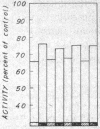Abstract
The enzymic activity of acetylcholinesterase can be photoregulated through the mediation of photochromic inhibitors of the enzyme. N-p-phenylazophenyl-N-phenylcarbamyl fluoride, an irreversible inhibitor of acetylcholinesterase, exists as two geometric isomers which are interconvertible through the action of light. The cis isomer, which predominates after exposure to light of 320 nm, is more active than the trans isomer, which results from exposure to light of 420 nm. It was possible, therefore, to use light energy to regulate the inactivation of the enzyme. Similarly, levels of acetylcholinesterase activity could be photo-regulated in a completely reversible manner by means of the photochromic reversible inhibitor p-phenylazophenyltrimethylammonium chloride. These experiments can serve as models for similar phenomena observed in nature, particularly in photoperiodic rhythms of higher animals.
Full text
PDF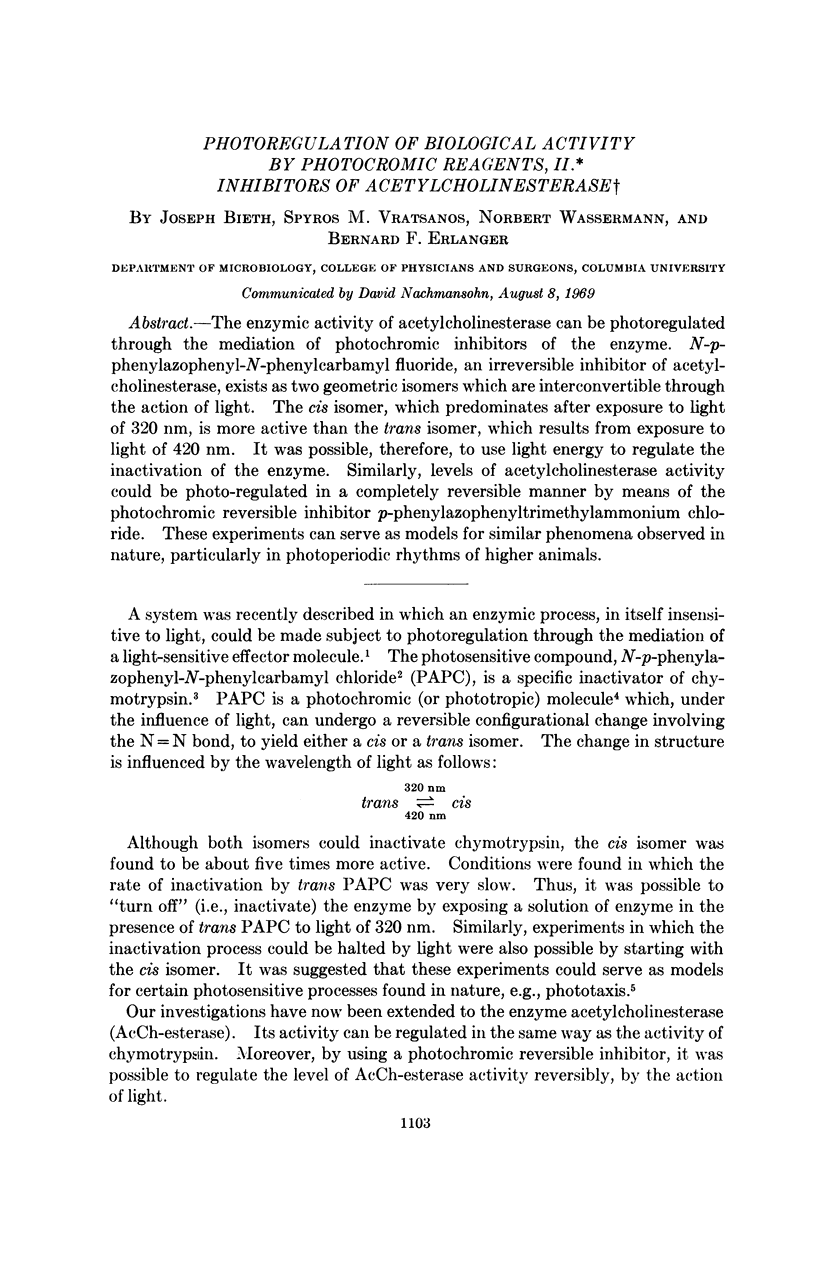
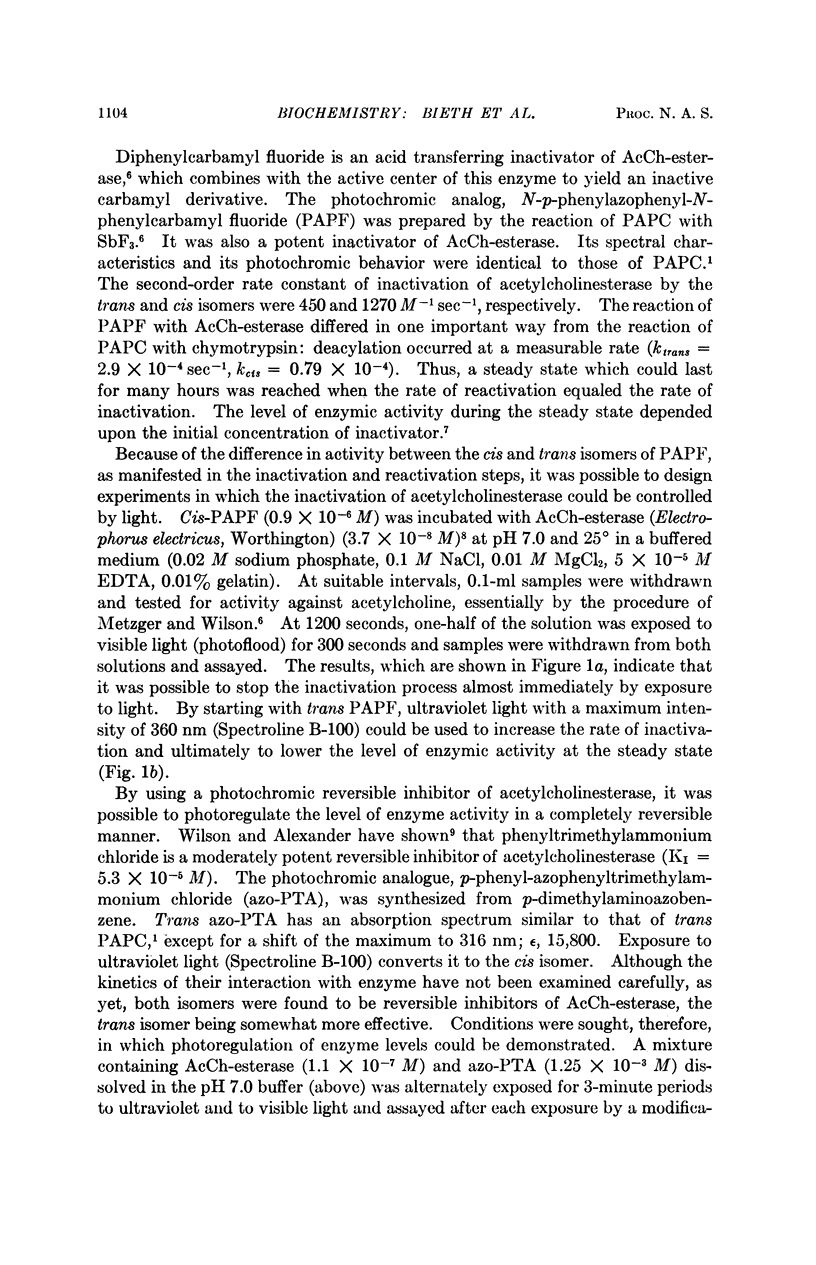
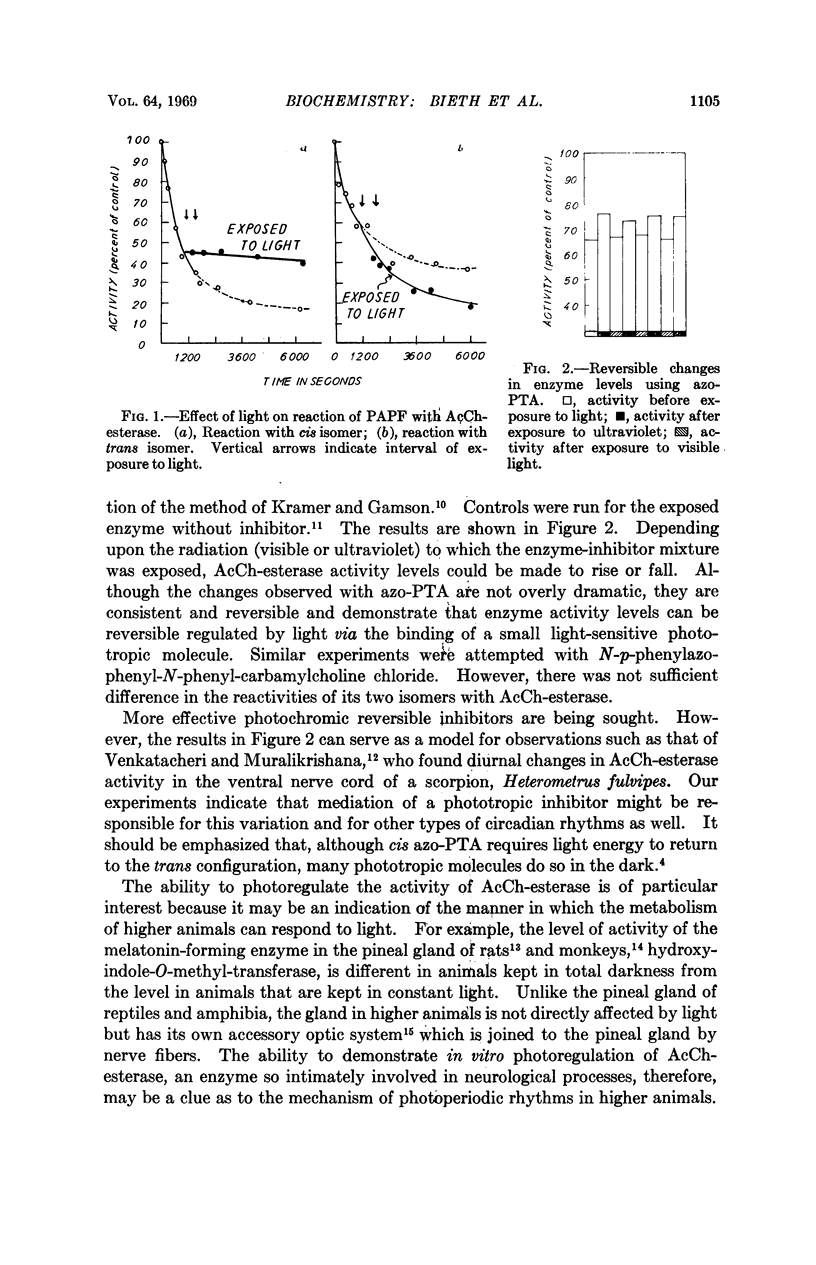
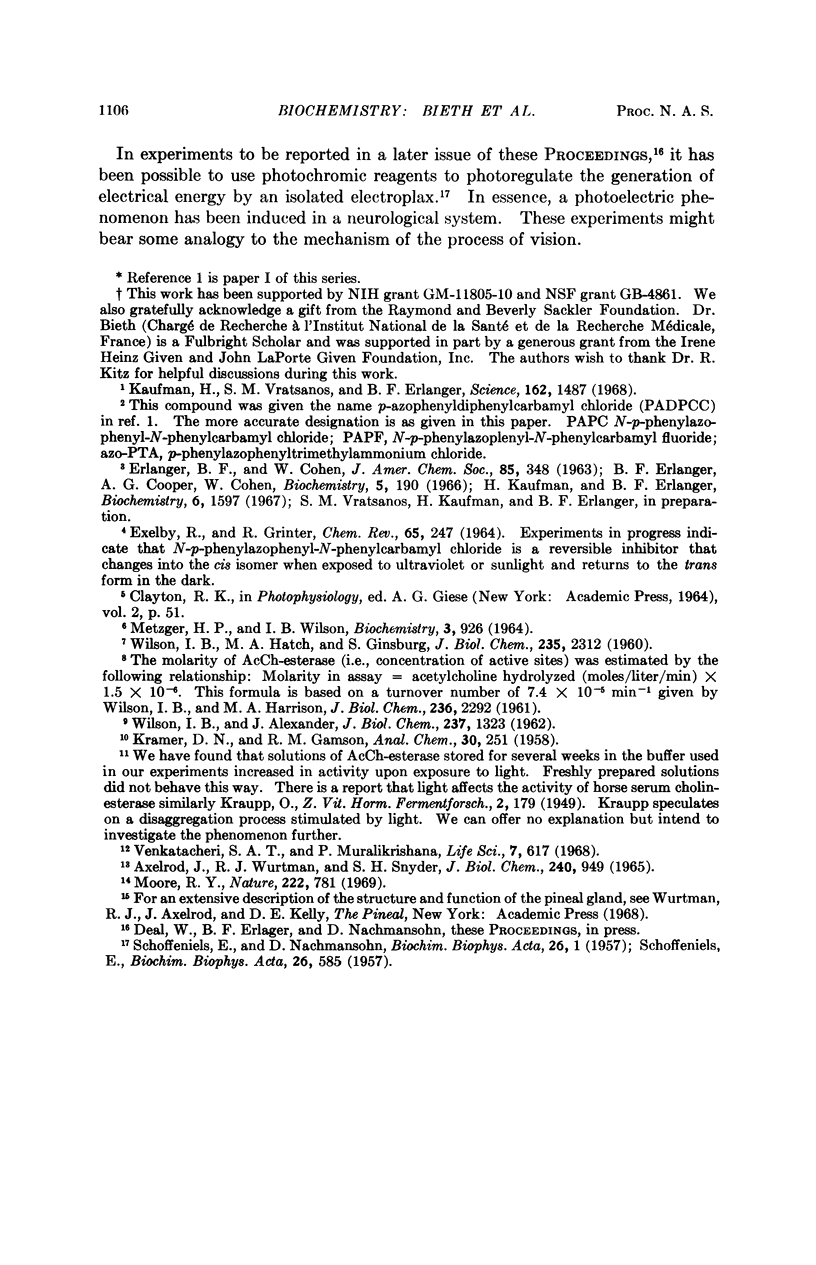
Images in this article
Selected References
These references are in PubMed. This may not be the complete list of references from this article.
- AXELROD J., WURTMAN R. J., SNYDER S. H. CONTROL OF HYDROXYINDOLE O-METHYLTRANSFERASE ACTIVITY IN THE RAT PINEAL GLAND BY ENVIRONMENTAL LIGHTING. J Biol Chem. 1965 Feb;240:949–954. [PubMed] [Google Scholar]
- Erlanger B. F., Cooper A. G., Cohen W. The inactivation of chymotrypsin by diphenylcarbamyl chloride and its reactivation by nucleophilic agents. Biochemistry. 1966 Jan;5(1):190–196. doi: 10.1021/bi00865a025. [DOI] [PubMed] [Google Scholar]
- Kaufman H., Vratsanos S. M., Erlanger B. F. Photoregulation of an enzymic process by means of a light-sensitive ligand. Science. 1968 Dec 27;162(3861):1487–1489. doi: 10.1126/science.162.3861.1487. [DOI] [PubMed] [Google Scholar]
- METZGER H. P., WILSON I. B. EVIDENCE FOR AN ELECTROPHILIC MECHANISM IN CATALYSIS BY HYDROLYTIC ENZYMES. Biochemistry. 1964 Jul;3:926–931. doi: 10.1021/bi00895a013. [DOI] [PubMed] [Google Scholar]
- Moore R. Y. Pineal response to light: mediation by the accessory optic system in the monkey. Nature. 1969 May 24;222(5195):781–782. doi: 10.1038/222781b0. [DOI] [PubMed] [Google Scholar]
- SCHOFFENIELS E., NACHMANSOHN D. An isolated single electroplax preparation. I. New data on the effect of acetylcholine and related compounds. Biochim Biophys Acta. 1957 Oct;26(1):1–15. doi: 10.1016/0006-3002(57)90047-1. [DOI] [PubMed] [Google Scholar]
- Venkatachari S. A., Dass P. M. Choline esterase activity rhythm in the ventral nerve cord of scorpion. Life Sci. 1968 Jun 15;7(12):617–621. doi: 10.1016/0024-3205(68)90083-0. [DOI] [PubMed] [Google Scholar]
- WILSON I. B., ALEXANDER J. Acetylcholinesterase: reversible inhibitors, substrate inhibition. J Biol Chem. 1962 Apr;237:1323–1326. [PubMed] [Google Scholar]
- WILSON I. B., HARRISON M. A. Turnover number of acetyl-cholinesterase. J Biol Chem. 1961 Aug;236:2292–2295. [PubMed] [Google Scholar]
- WILSON I. B., HATCH M. A., GINSBURG S. Carbamylation of acetvlcholinesterase. J Biol Chem. 1960 Aug;235:2312–2315. [PubMed] [Google Scholar]



